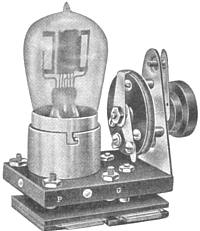
Radio engineering time travel (1930)
I invite you to look at the "pictures" related to radio technology in 1930. They come from various sources. The gallery has its sister version in Polish and Russian. Versions in other languages will be added successively. More detailed descriptions can be found in other language versions (articles are related and can be displayed by clicking on the icons with flags on the left, top of the TRIODA website). Of course, I will complement translations of signatures quite slowly. All descriptions are displayed using the present tense and not the past - this is not a mistake only deliberate action - a reference to the original descriptions from those years. In order not to delay the possibility of viewing the gallery, this site is made available as a "site under construction" - for which I apologize to all guests. At the beginning and end of each set of photographs there are links allowing to change the period - calendar year.
[Previous period] [Next period]
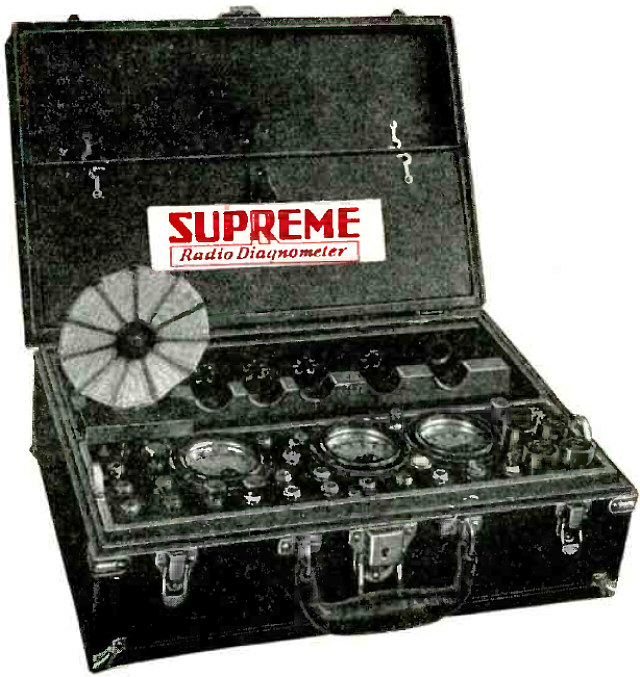
Advertisement.
"AMAZING!" That's the way radio technical men speak of the SUPREME DIAGNOMETER.
Its numerous remarkable qualities have brought the complete facilities of the laboratory to the home of the set-owner-adding speed and accuracy to the skill of the service -man. No other device approaches it in flexibility, completeness and range. Set testers check only 29%-40% efficient in comparison with its capacity. By equipping your Service Department with the SUPREME DIAGNOMETER you assure 100% service satisfaction which closes the sale and wins enthusiastic customer good will."
"Comes in handy carrying case providing compartments for all tools and spare tubes, or at the option of the purchaser, in an even smaller case, for the service -man who does not wish to carry tools and tubes in same unit."
(Radio for January, 1930)
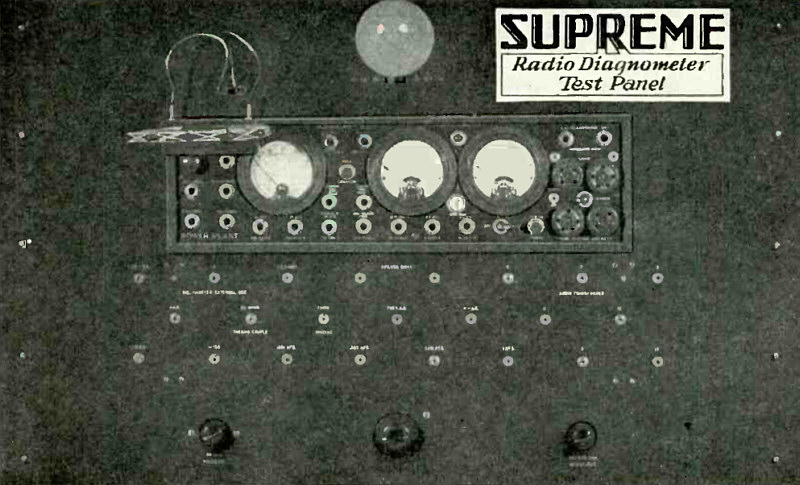
Advertisement.
"In keeping with SUPREME standards, unquestionably the most advanced test panel ever produced. Of heavy re-inforced Bakelite, it adds to the trim workmanlike appearance of laboratory or shop and assures sturdy service. Makes the DIAGNOMETER a dual purpose instrument-shop or portable service-instantly disconnectable."
(Radio for January, 1930)
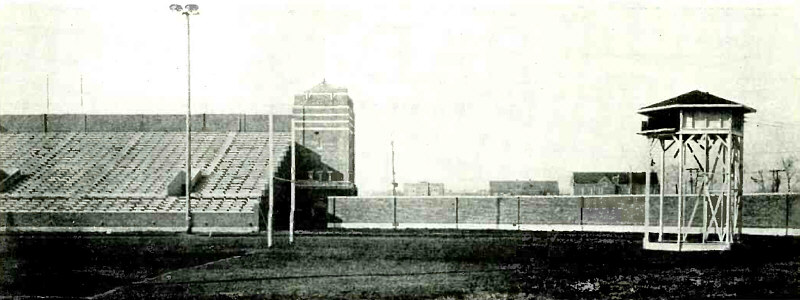
Speaker Installation at North Dakota Stadium.
Article: Tips on Merchandising Sound Equipment - Some unusual public address installations which suggest overlooked opportunities for the live salesman.
"Public ceremonies of all kinds, such as i n the dedication of new buildings, public institutions, memorials, etc., offer opportunities for the sound equipment specialist. At the dedication ceremony of the new Foshay Tower in Minneapolis recently, speakers were mounted at intervals all around the building, and when the speeches and music were amplified through them the traffic was stopped for blocks around. Of course in such cases it is advisable to make arrangements with the police before disrupting traffic, or the consequences may be embarrassing.
Such dedication ceremonies will no doubt become more popular with their sponsors as they become educated to the fact that sound amplification provides them with opportunities that did not heretofore exist. Formerly, if one man could talk to a hundred people without straining his voice he was lucky. If people cannot hear clearly what is being said they soon lose interest. Today, with good amplifier equipment and reproducers, one person can make himself heard by many thousands, and a large proportion of those thousands can actually see the one who is addressing them. Amplification brings the individual to the multitude as never before."
(Radio for January, 1930)
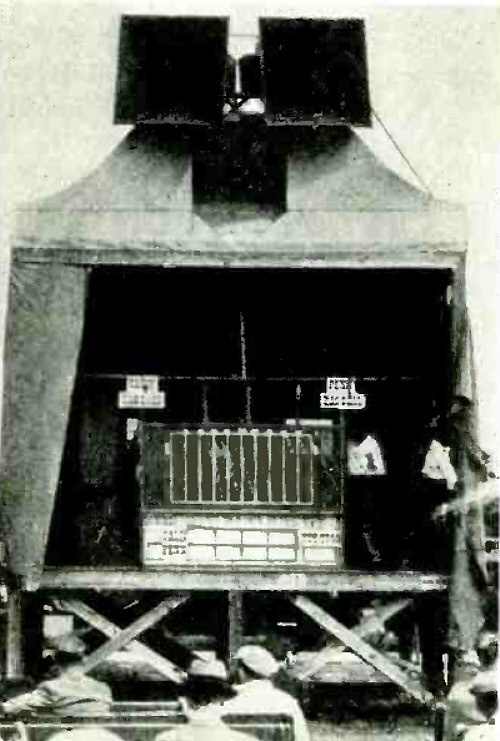
Speaker Booth at Miami, Florida.
Article: Tips on Merchandising Sound Equipment - Some unusual public address installations which suggest overlooked opportunities for the live salesman.
"Reporting football games at points distant from the scene of the conflict is a very successful method of attracting crowds. The type of listener it is desired to interest can usually be segregated by the surrounding and circumstances of the re -broadcast. For example the average radio store, with a receiver in its doorway is never very successful from a business standpoint because its audience is generally largely made up of bums and undesirables. On the other hand, the reporting installation installed by the Isle of Dreams Broadcasting Co. at Miami, Florida, was productive of
exceptionally beneficial results. As the picture shows, a special booth was erected in the park with a score board and gridiron diagram, surmounted by a couple of powerful speakers. Seats were arranged to accommodate several hundred listeners, with standing room for the balance."
(Radio for January, 1930)
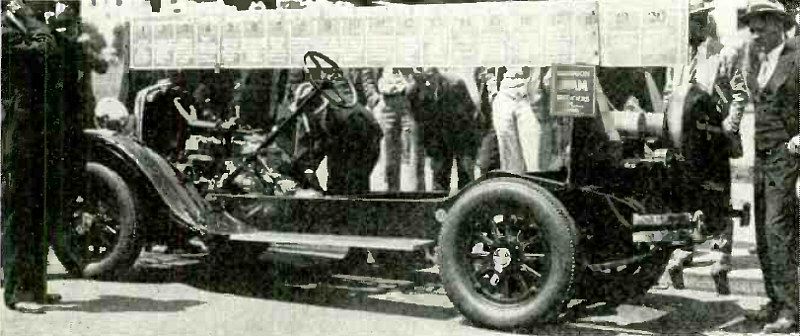
Speaker Booth at Miami, Florida.
Article: Tips on Merchandising Sound Equipment - Some unusual public address installations which suggest overlooked opportunities for the live salesman.
"A clever and unusual adaptation of loud speakers to automobile advertising was made use of recently by a San Francisco car distributor. When a new model chassis was introduced, he had the twenty leading features indicated by numbers painted on the chassis. These numbers were explained on a board supported above the chassis, as shown in the picture.
At the rear of the chassis, over the gasoline tank, was constructed a platform supporting two big dynamic speakers and a two -hole baffle board facing forward. The chassis, without a driver, was trailed behind a panel -bodied car in which the phonograph, microphone and amplifiers were installed. The field supply and voice wires passed along the tow -bar and under the chassis to the speakers.
As the two vehicles moved along the streets, announcements were made through the speakers, interspersed with music. At convenient points the cars were stopped so that the chassis and the signboard could be studied by pedestrians. At these times music was played at moderate volume to attract attention to the exhibit. According to the distributor, this "stunt" was an unqualified success."
(Radio for January, 1930)

Speaker Booth at Miami, Florida.
Article: Tips on Merchandising Sound Equipment - Some unusual public address installations which suggest overlooked opportunities for the live salesman.
"In the Yosemite Valley is an eminence known as Glacier Point which rises 3480 ft. above the floor of the valley. This point dominates the whole valley, and is the scene of an awe-inspiring spectacle known as the fire -fall. It consists of building a huge bonfire on top of the peak and pushing the blazing embers and red-hot ashes over the cliff. The fire falling that enormous distance is a sight never to be forgotten. In itself it is wonderful enough, but when it is combined with appropriate music it is even more thrilling.
Music was supplied for the first time recently, and proved such a success that efforts are being made to establish it as a permanent feature of the entertainment. On this occasion, two dynamic speakers with 4 ft. paper horns were mounted on the rocks as shown in the picture. They were pointed downward at such an angle that there would be no echo from the cliffs on the opposite side of the valley."
(Radio for January, 1930)

Dodge Senior Dashboard with Transitone Radio.
Article: Radio Sets in Automobiles.
"The idea of installing a radio receiver in an automobile is as old as radio itse1f, but not until recently has it shown signs of coming into general use. A year or so ago the Heina Corp. contracted to equip Stutz cars with radio and has been doing so to some extent ever since, until today, under its new name, the Automobile Radio Corporation, its products are available to all automotive manufacturers as well as to automotive jobbers and dealers..."
(Radio for January, 1930)

Cadillac Dashboard with Delco -Remy Radio.
Article: Radio Sets in Automobiles.
"With the arrival of the Transitoneequipped Dodge Senior Six, the Delco -Remy equipped Cadillac and LaSalle and those that are sure to follow suit
within the ensuing twelve months, comes the stage of much 'pink sheet' publicity; Nancy and Emma of the 'Follies' enjoying a breath of fresh air
and a tuneful serenade between rehearsals, a party of explorers in the California jungles 40 miles from civilization keeping track of the stock reports or the ball game as -they 'explore,' or the autoradio family combining the pleasures of an evening's drive into the country with their favorite program. Such publicity will be (and is) designed to sell automobiles. It will sell automotive radio sets as well. Therefore it should be capitalized by the jobber and dealer..."
(Radio for January, 1930)
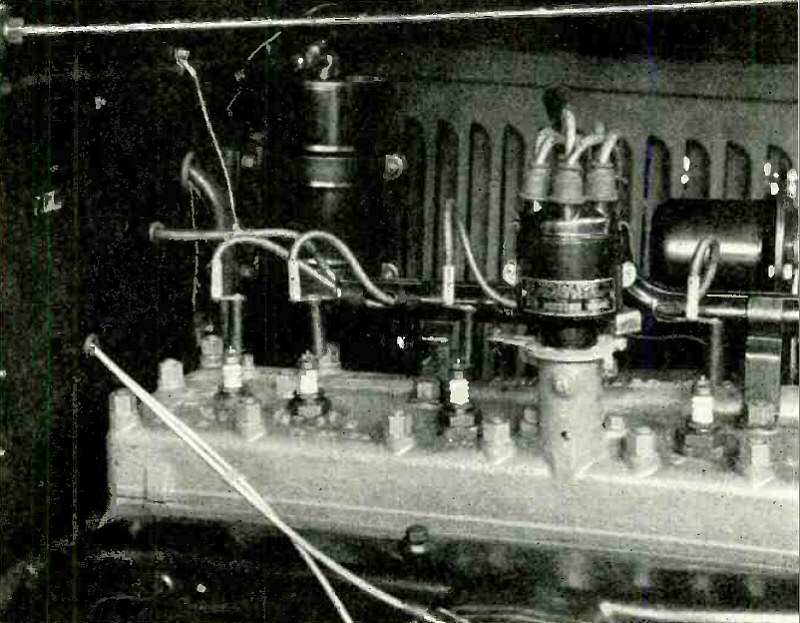
Dodge Senior Ignition System Showing Spark Suppressors and Bonding.
Article: Radio Sets in Automobiles.
"In installing either set it is necessary to eliminate the electrical disturbances caused by spark discharges in the motor. Therefore spark suppressors have been designed to be mounted on each spark plug and on the distributor -to -coil lead. A by-pass condenser is mounted across the generator contacts. These suppressors are merely high resistance units that tend to halt the flow of frequencies in the audio range and they have no effect
whatsoever on the operation of the ignition system of the car. All wires in the ignition system should be enclosed in armored cable or copper tubing and all such cable and tubing should be carefully grounded. In modern cars this is usually pretty well cared for..."
(Radio for January, 1930)
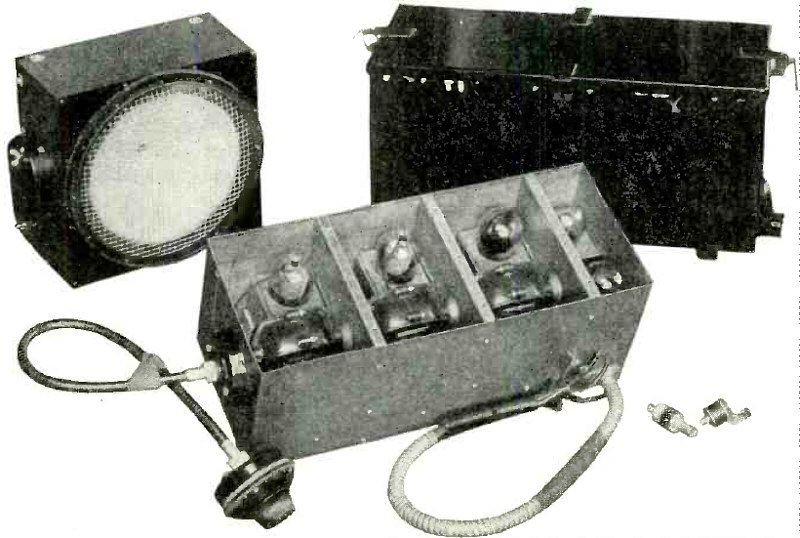
Chassis of Delco -Remy Automobile Set, showing Speaker, Battery Box and Spark Suppressor.
Article: Radio Sets in Automobiles.
"The Delco -Remy employs two tuned r -f stages in which type '24 a -c grid tubes are used. The detector is a '12-A, the first audio a '27, and the second audio a '12-A. The three a -c tubes are connected with their heaters in series so that the total current drain of the three is 1.75 amperes. Why d -c tubes were not used remains a mystery..."
(Radio for January, 1930)

Circuit Diagram for Distortionless Amplifier.
Article: A simple Distortionless Amplifier.
"The construction of an amplifier which will give true reproduction of voice and music requires a circuit which introduces no distortion or change in either frequency or phase. Although phase distortion is seldom considered, it is fully as troublesome in preventing true reproduction as is frequency
distortion. Both are caused by circuit reactances due to various combinations of inductance and capacity. Consequently an ideal amplifier would either contain no reactances or be equipped with compensating distortion correctors. The latter is difficult to accomplish unless the full manner and type of distortion be known. The former can be accomplished, except for the reactance due to tube capacity which can be made negligible at audio frequencies..."
(Radio for January, 1930)
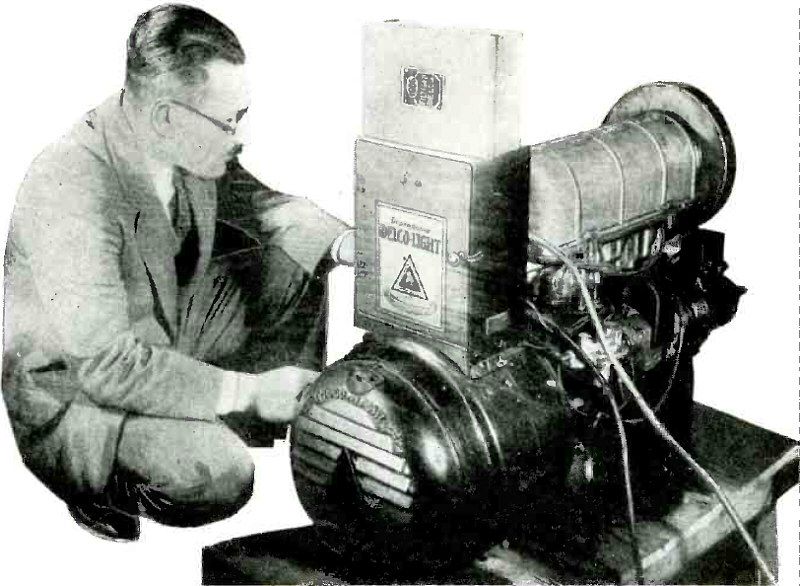
Filterette Installation on TRypical Delco Farm Lighting Plant.
Article: Radio Interference from Farm Lighting Plants.
"Of all those to whom radio means much, there is no one, unless it be the mariner himself, to whom it means more than to the farmer. Isolated, often, in the foothills of a vast, sparsely settled region, miles, perhaps, from the nearest neighbor; virtually imprisoned when winter's storms and sleet have piled the roads into impassable drifts, his unfailing contact with the outside world is the radio. There, warm and snug in the simple furnishings of his home, sitting before the leaping flames of a crackling log fire, (perhaps with a jug of hard cider, too, because some of those
farmers don't have it too tough) he lies back in his favorite chair and turns on the finest talent of Broadway..."
(Radio for January, 1930)
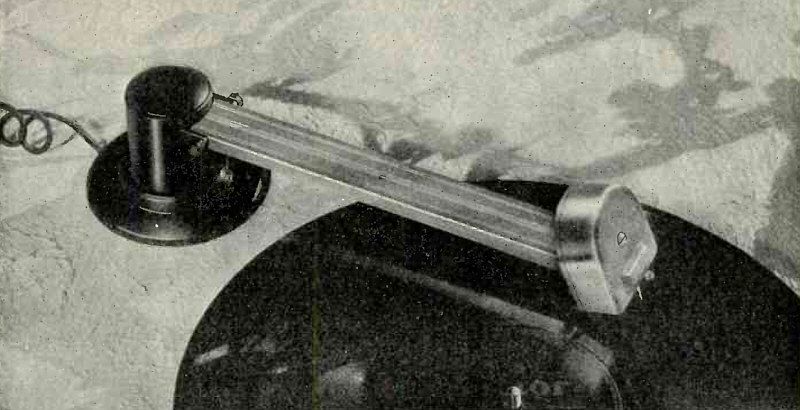
Advertisement.
"Presto Elektro-magnetik Pick-up.
Unsurpassed brilliance and power in record reproduction has been brought about by the new Presto Electro -magnetic Pick-ups. Attractive-structurally, mechanically and electrically correct-sensitive-a delight to hear-these instruments are creating new standards in the electrical reproduction of records."
(Radio for February, 1930)
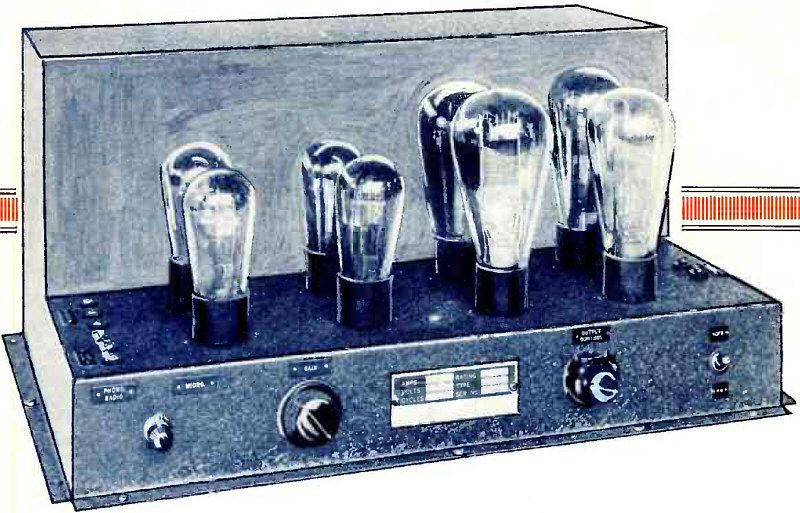
Advertisement.
"New 3-Stage Push-Pull Type PA-250.
Three stages of push-pull amplification with built-in noiseless volume control, eliminating ALL hum and giving exceptionally high gain.
Variable constant impedance output control for matching output of amplifier to any line or speaker condition.
Supplies microphone current. Control built-in.
Possessing remarkable hum -free tone quality due to three stages of push-pull amplification. Maximum undistorted output of 15 watts sufficient for coverage of a large -sized theater or outdoor gathering of 1000 to 5000 people. Two stages of push-pull 27's feeding an output stage of two 50's in push-pull. Frequency response curve flat within 2 DB (tu) from 40-8,000 cycles..."
(Radio for February, 1930)

Typical Gothic Cabinet.
Article: The Earmarks of Period Furniture.
"Successful, selling of radio requires that the salesman be able to recognize the different period designs of radio cabinets and to intelligently discuss
with his client their decorative qualities. To do so, he should have at least a slight knowledge of the several outstanding historical periods whose names are used to identify furniture. This applies not only to domestic reproductions, but also to the imported cabinets that are being used to house radio sets. It requires no extraordinary perception to recognize the period design of a piece of furniture. Every furniture period has certain
outstanding features which are easily distinguishable. One of the surest and easiest ways to recognize a design, and to classify its period, is by the shape of the legs of a piece of furniture. The period of the legs being determined, it is safe to assume that the upper structure has been designed to conform..."
(Radio for February, 1930)
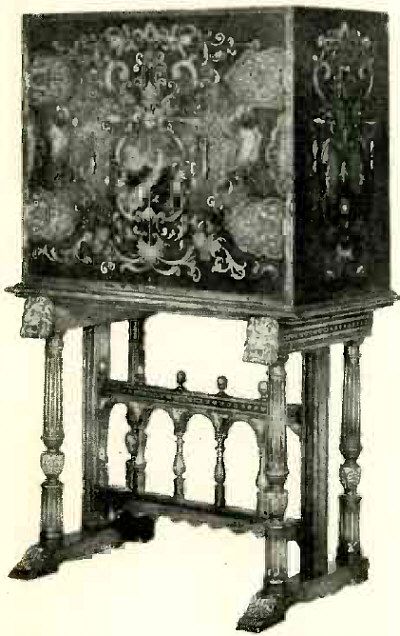
Spanish Renaissance Cabinet Showing Moorish Influence.
Article: The Earmarks of Period Furniture.
(Radio for February, 1930)

Cabinet of Louis XV Period.
Article: The Earmarks of Period Furniture.
(Radio for February, 1930)
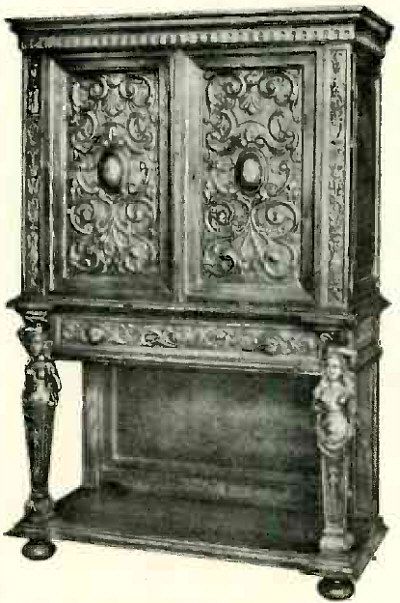
Cabinet of Italian Renaissance Design.
Article: The Earmarks of Period Furniture.
(Radio for February, 1930)

A Louis XVI Model.
Article: The Earmarks of Period Furniture.
(Radio for February, 1930)
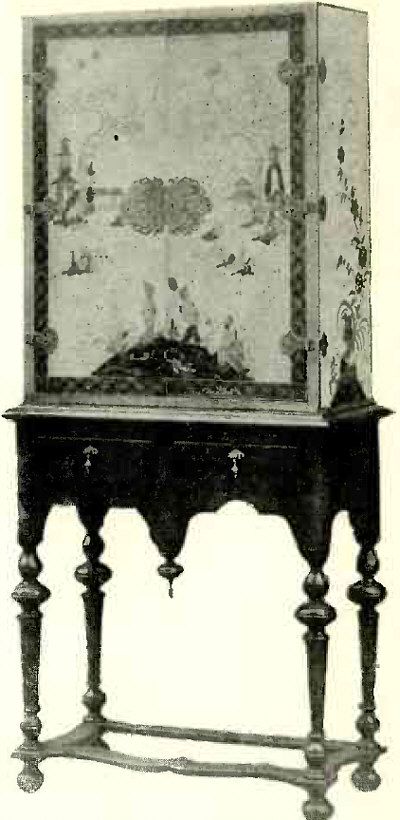
Cabinet of the William and Mary Period.
Article: The Earmarks of Period Furniture.
(Radio for February, 1930)

Characteristic Designs of Legs in Period Furniture.
Article: The Earmarks of Period Furniture.
(Radio for February, 1930)
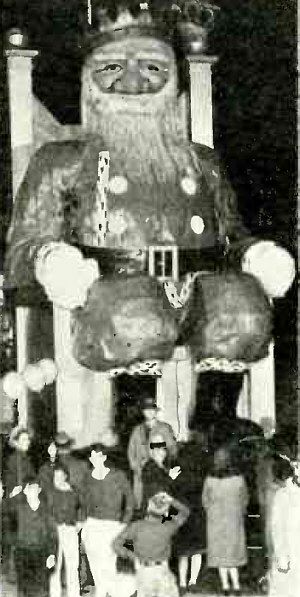
A Talking Santa.
Article: Novel Applications of Amplifying Equipment.
" December 1929 was a banner month for sound equipment specialists throughout the country. 'l'here was hardly a municipality that did not have its Christmas tree, illuminations, and sound installation. For most of them the amplifier equipment was an innovation that gained instant approval. Many thousands of people thus made their first acquaintance with modern sound reproduction methods, to the ultimate advantage of the sound
equipment business.
In some cities sound equipment was also used to stimulate the public enthusiasm for spending money, and further instill the Christmas spirit into the crowds. Los Angeles, for example, emulated St. Paul's idea of last year by installing loud speakers along the streets and entertaining the shoppers with carols and shopping advice. San Francisco had a notable installation that not only attracted thousands of people, but built up an enviable amount of good will and actual cash business for the oil company that sponsored it.
This installation was used in connection with a talking Santa Claus 35 ft. high, an appropriate Arctic background incorporating many subjects from the realms of fairyland. The whole display was a city block long and faced one of the company's gasoline stations. Sales of gas during the period of the display were increased from a few hundred gallons a day to many thousands..."
(Radio for February, 1930)
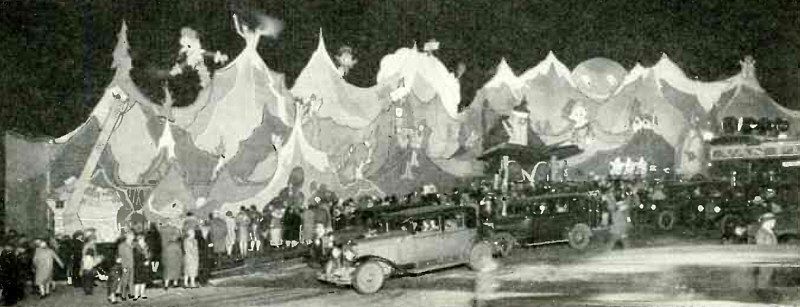
A Writing and Talking Santa.
Article: Novel Applications of Amplifying Equipment.
(Radio for February, 1930)

Circuit Diagram of Mutual Conductance Bridge.
Article: Finding What's the Matter With a Defective Tube.
" When trouble in a radio set has been found to be due to a defective tube, the question often arises as to what is the matter with the tube. Test may show that its emission is "up" and that it oscillates well, yet it does not give the amplification that is to be expected from a tube of its type. An
emission test merely indicates that the filament is in good condition and the oscillation test that the degree of vacuum is normal, no more and no less. They tell nothing about mis -spacing of the elements, for example, which seriously affects the plate impedance and amplification factor, and consequently the tube's performance.
It is impracticable for the average radio service shop to be equipped with apparatus for testing plate impedance and amplification factor. There is, however, another tube characteristic called "mutual conductance" which tells aplenty about both and which can easily be measured in any tube with apparatus that may be simply and cheaply constructed.
Mutual conductance, when divorced from its harem of technical terms, is merely a measure of the change in plate current that is produced by a change in grid voltage. Consequently it tells all that need be known about a tube : whether there is sufficient emission from the filament or cathode, what is the area, nature and temperature of this electron -emitting surface, whether the plate has sufficient area, whether the grid -mesh is fine
enough, and whether the elements are correctly spaced.
All this can be learned with the instrument here described by putting the tube in the socket, adjusting the filament voltage to the required standard, connecting the specified grid and plate voltages, and adjusting the calibrated knob until a minimum signal from an oscillator is heard in the phones. If the scale reading at this point does not correspond tc that given in the table of mutual conductances, the tube will not "match"
normal tubes in a critical circuit. Whether it is the fault of emission, faulty spacing of the elements or what have you, the result is the same, for the mutual conductances must be matched!..."
(Radio for February, 1930)
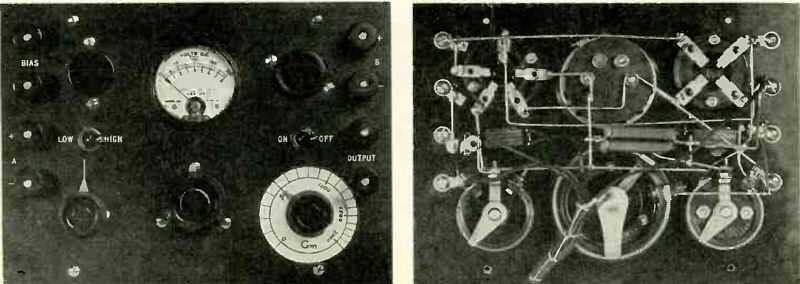
Front and Rear View of Mutual Conductance Bridge.
Article: Finding What's the Matter With a Defective Tube.
" Constructing the Conductance Bridge.
Although no original ideas are brought forth in this description of a home-made mutual conductance bridge, service men may find some value and a lot of encouragement from the very simplicity of the job. Mechanical specifications and panel layouts have been avoided because everyone who reads this will have his own ideas as to layout. It may, of course, be built into the present shop testing panel, space permitting, or be drawn into the design for a complete new testboard or portable test set, or it may be built into a separate unit as shown in the accompanying pictures.
Two rheostats are provided for variation of filament voltages; one for high current tubes and one for low current tubes. A s.p.d.t. toggle switch puts the two in series for the low current loads and uses the low resistance rheostat alone for high current loads. The two -range voltmeter is used simply because it was the only one available, a measurement of the plate voltage being an unnecessary annoyance if the B battery voltage or
other power supply is known to be normal. A 4 -prong and a 5 -prong socket are used to eliminate the necessity of an adapter..."
(Radio for February, 1930)
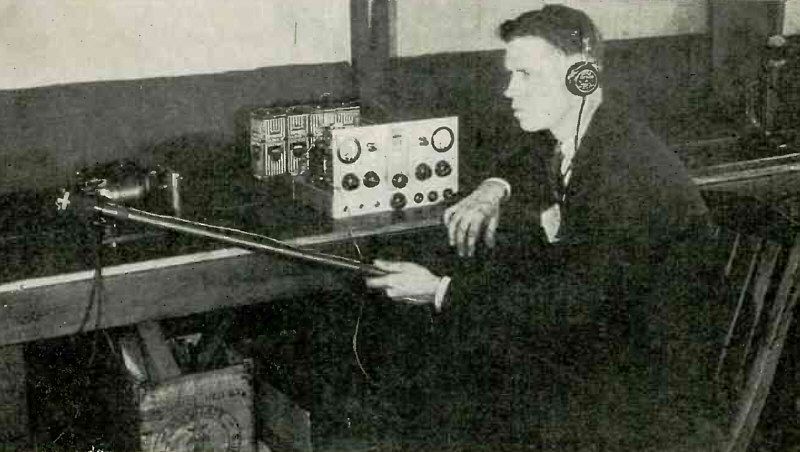
"Now That's What I Call a Knobby-Looking Set!".
Article: Anyone Can Duplicate, but Who Originate?.
(Radio for February, 1930)
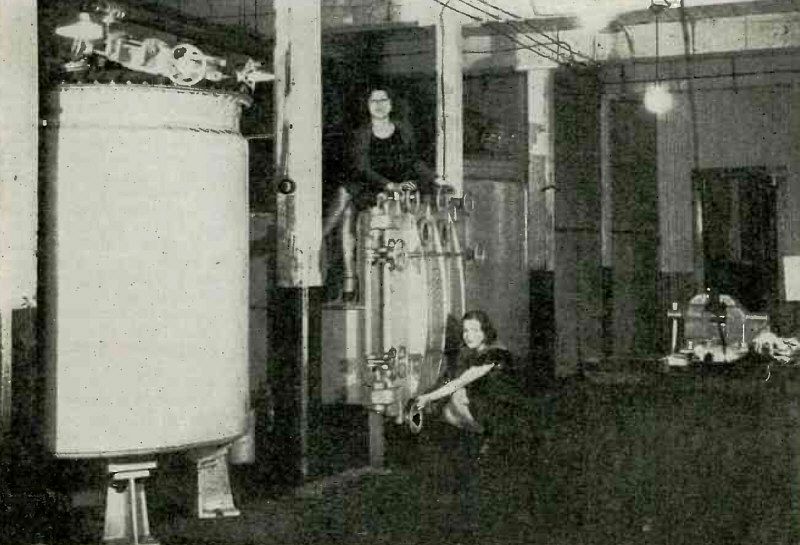
Article: Anyone Can Duplicate, but Who Originate?
(Radio for February, 1930)
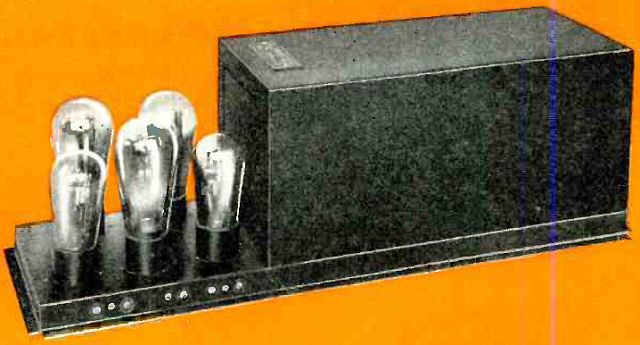
Model PA-245 5 Watts Output.
" The ideal small amplifier for those who are satisfied with nothing short of the best. Push -Pull throughout, with '27 tubes in the first stage and
push-pull 45's in the last stage. Ideal for phonograph console installation. Supplies field current for Dynamic Speaker and will take phono -pick-up or
radio output. Also supplies 180 volts at 15 ma and 2 t/z volts at 7 A for R -F Tuner or radio set..."
(Radio for March, 1930)
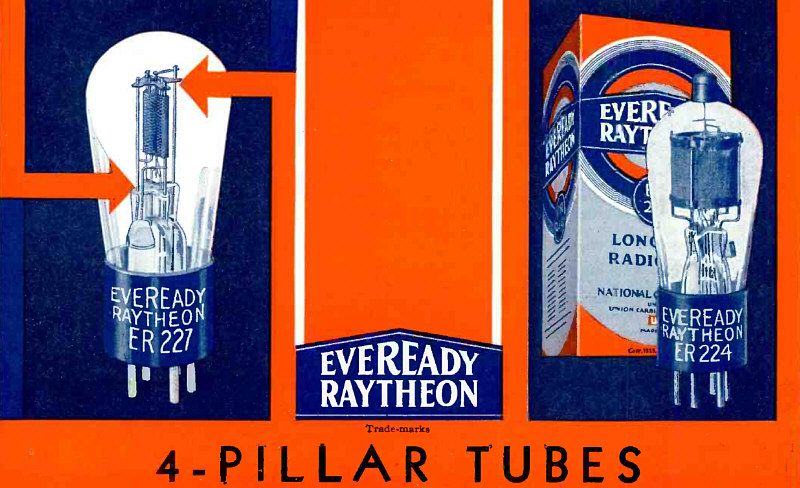
Advertisement
(Radio for March, 1930)
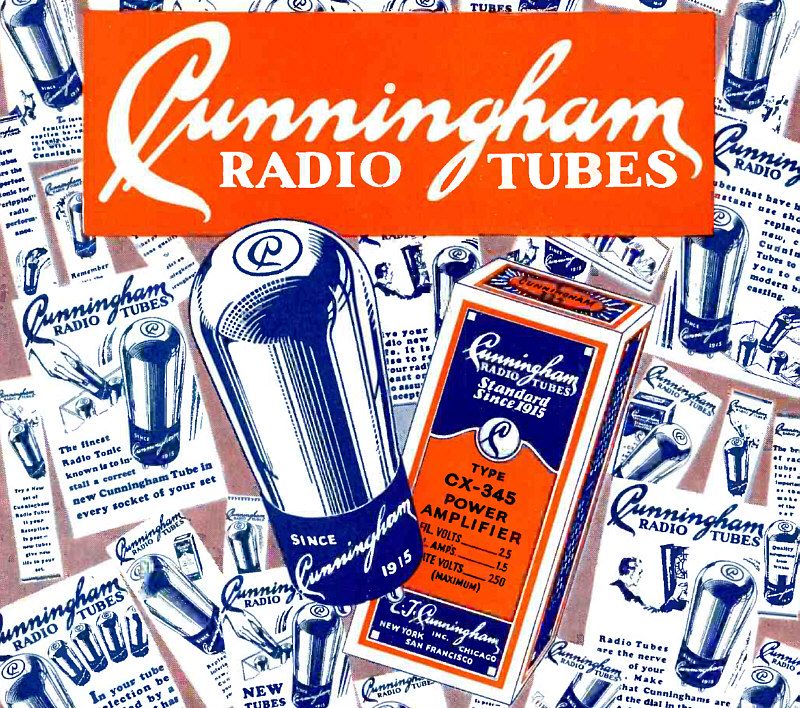
Advertisement
"Cunningham Radio Tubes have proved their right to the stamp of quality by public approval expressed in an ever-increasing national demand. A Cunningham sale is a guarantee of consumer satisfaction."
(Radio for March, 1930)
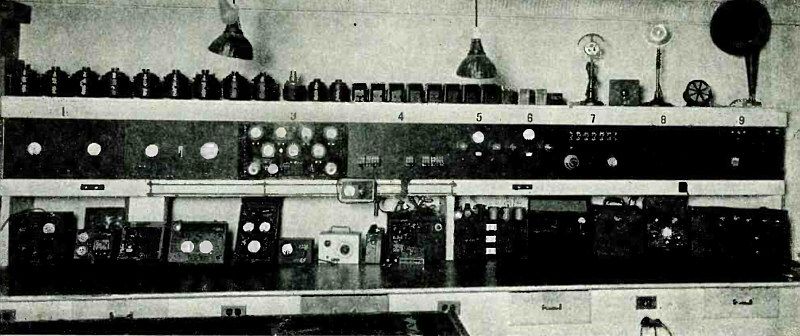
Radio Service Bench of the Hall Music Company, Abilene, Texas
Article: The "Panel at a Time" Radio Shop.
"The best way to equip a radio service shop without throwing too much capital into it at the outset is by following the unit method; building one panel at a time according to the nature of the demand and the resources at hand. The radio shop of the Hall Music Company, Inc., of Abilene, Texas, was built in this manner.
As shown in the picture, the problem of expansion was taken into consideration at the beginning. The large bench and shelves were built and nine panels were cut and fitted into the upper rack. Then during the three years that followed, panel after panel was mounted and wired until the present shop includes practically everything that could be desired by the test crew.
The panel in No. 3 position was the original test panel, being designed for testing battery sets but having been revamped during the process of evolution in radio until it may now be used for checking either d -c or a -c sets.
The next panel needed was a resonance indicator (panel No. 5) for aligning condensers when the set was not in operation. Then came panel No. 6 with a modulated oscillator, this being followed by the panel in the No. 2 position, which was designed for testing continuity and resistance by means of a glow tube or a -c voltmeter. A telechron clock is mounted on this panel for convenience..."
(Radio for March, 1930)
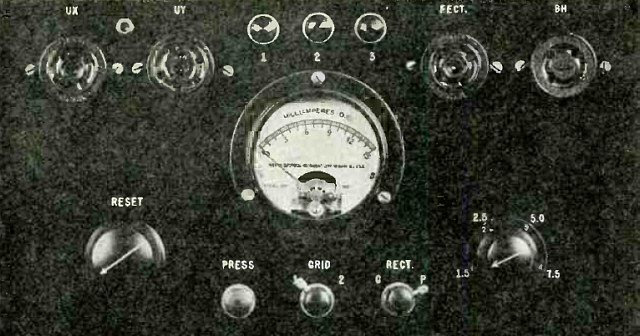
Panel of A-C Operated Tube Tester
Article: An A-C Operated Tube Tester
"An A-C operated tube tester should be in every shop. The battery type of tester is forever hampered by rundown batteries and quite frequently
gives erroneous readings because of this condition. The tester here described will test all types of tubes in use today, including the gaseous type rectifier tube and the screen grid tube, and with the exception of three small flashlight cells from which the current drain is very small, it will operate entirely from the 110 volt a -c line..."
(Radio for March, 1930)

Wiring Diagram of A -C Operated Tube Tester
Article: An A-C Operated Tube Tester
"... One of its features is that the inclusion of a zero reset control makes it possible to read the merit of the tube directly from the scale of the meter without having to take the difference between two different plate current readings at different grid potentials, as is done in the conventional mutual conductance tube tester. This feature is especially valuable where the tester is operated by non -technical personnel, such as salesmen or stock clerks. Another feature is that the rectifier tubes are tested under actual load conditions and the switching arrangements of the meter are such that the current of both plates of a full wave rectifier may be read individually, thus detecting any difference of emission current which might cause a hum in the receiver.
A push button method of control is arranged so that when the tube is placed in the socket of the tester, the elements of the tube are connected in series with flashlight bulbs and a battery in sucha manner that any short between elements will be indicated by the pilot lights, thus preventing any possible damage to the meter and saving the time necessary to test a tube which would be useless in a receiver.
The operation is comparatively simple. The proper voltage for the tube being tested is selected by means of the voltage dial and the tube placed in the socket. If none of the three pilot lamps which are for indicating shorts, light, the button marked PRESS is held in and the knob marked RESET is adjusted until the reading of the meter is zero. The switch marked GRID is changed from point 1 to 2 and the reading of the tube taken directly from the meter scale...."
(Radio for March, 1930)
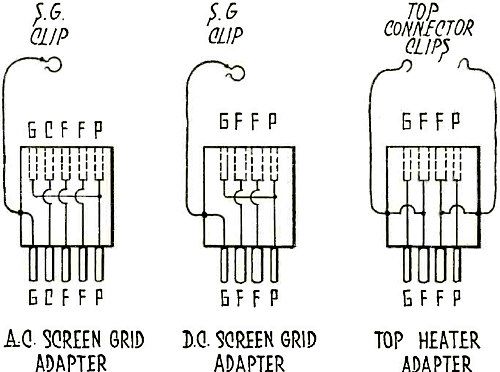
Various Adapters
Article: An A-C Operated Tube Tester
"... If the rectifier tube to be tested is of the filament type, it is placed in the socket marked REGT, and if of the gaseous type, in the socket marked BH. The switch marked REGT is then held in the P position, the reading taken, and it is then held in the G position, and the reading taken again. If the two readings are practically the same and if they come up to the standard reading for that type of tube, the tube may be considered good.
Adaptors are used for testing the screen grid and top connector type of heater tubes. The wires with clips for connecting to the control of the screen grid tube and the filament terminals of the top connector type of tube are fastened permanently to the adaptor as it was found that when separate leads were used they could never be found when wanted.
Two separate adaptors are used for screen grid tubes, one for the d -c and one for the a -c type, the wiring connections being shown in Fig. 3. The tubes are inserted in the adaptors placed in the socket of the tube tester and tested in the usual way. These adaptors can be easily made from a Pilot No. 214 for the four -prong, or a Pilot No. 215 type of socket for the -five -prong adaptor, by grinding down the edges until they fit snugly into the base of a burned out..."
(Radio for March, 1930)
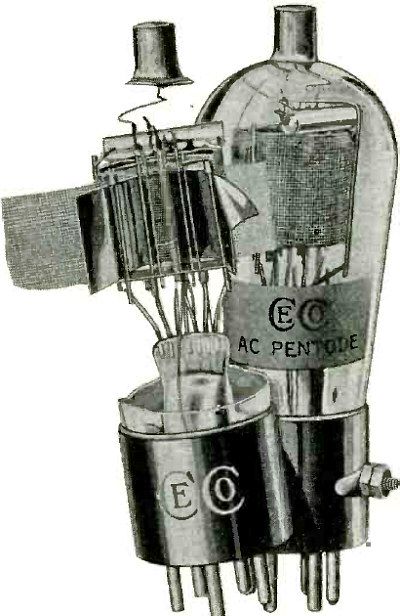
CeCo A-C Pentode
Article: CeCo Brings Out A-C Pentode
"The CeCo Manufacturing Company has started production on a five -element a -c tube. This has two screen grids, with one screen around the plate, as in the four - element tube, and with one screen between the control grid and the cathode, this being known as a space charge grid.
Its plate, screen grid, cathode, and heater connections are the same as those of the standard '24 tube, having a five -prong base and cap at the top of the bulb. Its space charge grid contact is made through a screw and nut at the side of the base. The heater draws 1.75 amperes at 2.5 volts, the control grid takes 1.5 volts negative, and the plate 250 volts.
Its mutual conductance is rated at from 2000 to 2500 micro -ohms, and its amplification factor from 540 to 750, according as the space charge grid is 10 or 20 volts and the screen grid 135 or 180 volts. The mutual conductance is about twice that of the four -element tube..."
(Radio for March, 1930)
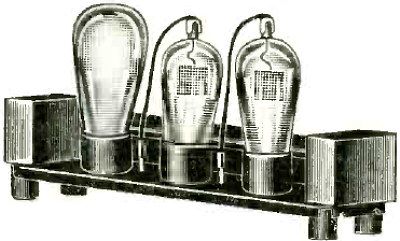
Direct Coupled Amplifier Kit
"We offer the following equipment in a kit we have assembled - metal chassis (mfrs' type), subpanel, sockets, steel trough with cover (to hold all the resistances) two Grebe one mfd. condensers, tip jacks, two screen grid tube connectors with clips, potentiometer, all hardware, rubber feet, etc. To complete the job all you need is a soldering -iron."
(Radio for March, 1930)

Condenser Leakage Tester for Radio and Automobile Service
"This is the pioneer and first instrument of its kind no transformers-no chance to injure the highest class meter obtainable-so sensitive the finger will deflect the needle full scale, but a dead short circuit cannot injure the instrument. Plugs directly into light socket-no external batteries or equipment necessary. A needed instrument marketed by pioneers in the service instrument field."
(Radio for April, 1930)

Cadillac Instrument Panel With Radio Control at Right
Article: The Eye Appeal of Some New Sets
(Radio for April, 1930)
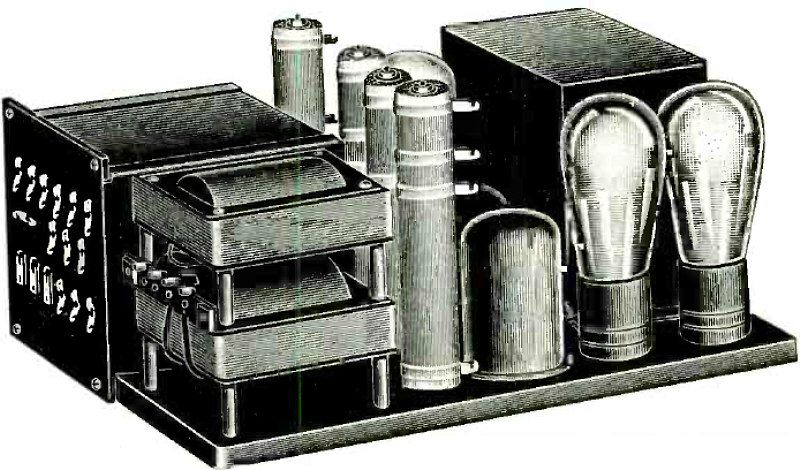
Our Special Type 245 Push-Pull Kit
(Radio for April, 1930)

Tobe Interference Locator
Article: Characteristics of the Tobe Interference Locator
"From the very beginning of radio, it was possible to hear many mysterious noises which, due to the lack of knowledge of their origin, were generally called "static." Many of these noises were due to faulty design and construction of receivers. With the improvements which followed the commercializing of broadcast receivers, it became evident that electrical disturbances, other than "atmospherics," were responsible for the majority of these noises. These disturbances, therefore, became known as "man-made static.
Without doubt, the earliest causes of man-made static were electrical transmission defects. In those days, tree grounds, poor insulators and poor contacts in junction boxes were the rule rather than the exception; and quite a number of transformer defects also contributed their share of the trouble.
The calls on power companies were so numerous that it became imperative on their part to locate these disturbances. Strange as it may seem, the added burden thus imposed actually reacted to their benefit, as, through the location of these troubles, considerable savings were made due to the early detection of leaks and defects in apparatus before actual breakdowns occurred..."
(Radio for May, 1930)

Advertisement
"Six Tubes-Three Screen-Grid-Four tuned circuits-Power Detector-Power Amplifier-Super Sensitive-Powerful. By the manufacturers of the famous TOM THUMB Portable.
Every auto owner a prospect-everyone waiting to buy the new AUTOMATIC MOTOR CAR RADIO. A quality radio-simple, reliable-durable. Easy to install in any make of car-every dealer must be prepared to meet the new demand. Extremely profitable proposition for dealers and agents
everywhere. Wire or write at once."
(Radio for June, 1930)

Jenkins Television "Camera"
Article: News of the Radio Trade
"Jenkins Television Corp., in connection with a series of experimental picture broadcasts from W2XCR at Jersey City, N. J., has developed the "camera" illustrated herewith in order to "pickup" the image of a fully illuminated subject. This "camera" consists of a photoelectric cell, lenses, amplifiers and batteries. Sound is also picked up by a microphone and transmitted on a separate channel as an accompaniment to the transmitted picture."
(Radio for June, 1930)

Radio School for Outside Salesmen
Article: Selling Programs Rather than Sets
"The Harp Company of Baltimore, Maryland, believes in selling people what they want. That is why, figuratively speaking, Harp' salesmen frequently sell the microphone rather than the radio set. Most prospects are interested not in the set itself, but in the entertainment it will bring to their
homes. If they are not yet prospects, it will, in many cases, be the lure of a nightly box seat at the theatre or the home which will eventually result in their signatures on the dotted line.
As a consequence, this company sees to it that each of its men knows what is on the air. More than that, they encourage salesmen-the outdoor men in particular-to put this knowledge to work in making sales that probably would not be made without it. A knowledge of the broadcast highlights has been found particularly helpful in getting prospects who are "on the fence" to agree to demonstrations in their homes..."
(Radio for July, 1930)

A Radio Chassis, Hidden Away in a Cupboard, Can Be Controlled from a Library Chair by Means of a Sleeper Remote Control Unit
Article: The Value of Saving Time in a Radio Store
"A live radio dealer in one of the western states called a round table conference of his associates to find out why the overhead was so high and
the profits so lean. After considerable discussion the problem simmered down to a matter of saving some of the time that everyone was wasting. Even the manager found that he was wasting two hours a day in listening to callers, talking with employees and salesmen, or waiting for telephone connections or calls. Everyone else was wasting about the same amount of time.
Although they realized what a dent this was making in a day's work, they could not immediately decide how it could be helped. Certain callers had to be seen, a certain amount of talk with employees was necessary, and certain telephone calls could not be avoided. The question was finally put up to a meeting of all the employees. They were shown how the habit of wasting time was causing them additional work and preventing any increase in salaries..."
(Radio for July, 1930)

Interference Locator in Use
Article: Tobe Interfèrence Locator Draws Crowds at Show
"The Tobe Interference Locator is a proved success. Production has been going on for weeks now, and output will be gradually increased to meet the flood of orders which have poured in since the announcement that the instrument was available for immediate delivery.
The first production . model, that is, the first instrument which was completed in the regular factory assembly, rather than in the laboratory, was taken to Sturgis, Michigan, by a Tobe Radio Interference engineer, who is now conducting a survey of radio receiving conditions there, at the request of municipal authorities..."
(Radio for July, 1930)

Article: How to Be a Radio Hawkshaw
"Things were going along their lumpy but usual way in the store of the Gray Radio Company. The telephone was ringing on an average of once every fifteen minutes with a demand for service or something by some one of the store's three thousand customers.
Then of a sudden into the busy calm of the office burst, like a human tornado, a little jumping shaggy man with long reddish mustaches and glaring bristlybrowed eyes.
"She's skipped out !" he fairly shouted, as he plunged in beside the manager's desk. "She's run off with my dimings pin an' your Hotwater Kettle radio in her trunk. Quick! You got to catch her !"
"Who-what's her name?" demanded Gray, rising and shoving the distracted rag -bag of a man into a chair.
"Don't you know me-I'm Bozikthe Bozik of West Redbank - I got thirty-eight tenement flats. It's my dimings pin I'm worrying for. She had my
keys. Used to-to clean up my place. She took my dimings pin and six blankets. Your radio-she said a dozen times she was going to let you kiss her
foot for the money because you sent a collector at her door every week-that dimings pin, I got it for the rent from the Schroder bunch-fifty dollars if a nickels, it was worth..."
(Radio for August, 1930)

Sue Carroll and Leon Barrous in a Publicity Picture
Article: What Some Dealers Are Doing To Get More Business
"Ideas concerning merchandising methods that crystallized while on the road for Stewart -Warner have been the basis of the success of Leon
Barrows, owner of The Barrows Company, radio dealer, 5545 Sunset Boulevard, Hollywood, Calif. All forms of promotional effort have contributed to
the success of the firm: direct -mail, newspaper advertising, stunts, etc., all centering around the personality of Leon Barrows. Barrows is a firm believer in selling himself to the public.
The Barrows' business has doubled and tripled in volume the past year over the first year or two. Last year's volume totaled $76,000.
Figuratively speaking, Mr. Barrows believes that he must look far ahead to keep abreast of the times. He has been delving deeply into less developed phases of radio, notably public address systems, audiophones and talking pictures. Being located where talking pictures are made, he is better able to visualize the rapid changes that can be expected in radio in the next few years, and is preparing himself for those changes. He is reading technical magazines on the subject, every available book, and all manufacturers' descriptive literature..."
(Radio for August, 1930)

Radio Doc's Store at Pasadena, California
Article: Building a Successful Business Notwithstanding a Physical Handicap
"RADIO DOC has not walked a step for fifteen years; he directs all his business operations from a wheel chair, yet he has built up at Pasadena,
California, the largest radio service business in that city. During most of the year he has seven service cars on the go, oftentimes nearly all day and
night. His real name is Dr. D. I. Wadsworth, and for twenty-six years he practiced dentistry in Washington and Oregon. Fifteen years ago, however, he was attacked with arthritis, and from that time until now he has been confined to a wheel chair.
He moved to southern California, and when radio came into vogue he became interested and directed the construction of a receiving set which attracted attention over a wide area, as it was the very first set in southern California to support a loudspeaker. To amuse himself he began writing letters for radio announcers to read. "Uncle John" and "Uncle Remus" were then in their ascendancy, and it was "Uncle Remus" who gave Dr. Wadsworth the nickname of "Radio Doc," a nickname which stuck and a name which stood him in good stead when he established his own place of business well out of the business center of the city..."
(Radio for August, 1930)
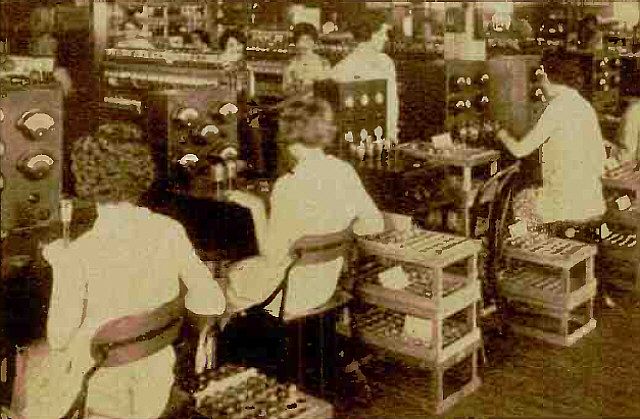
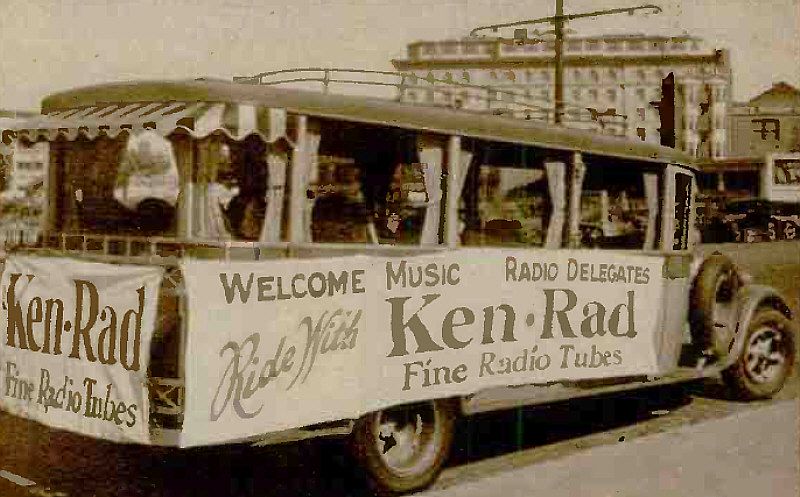





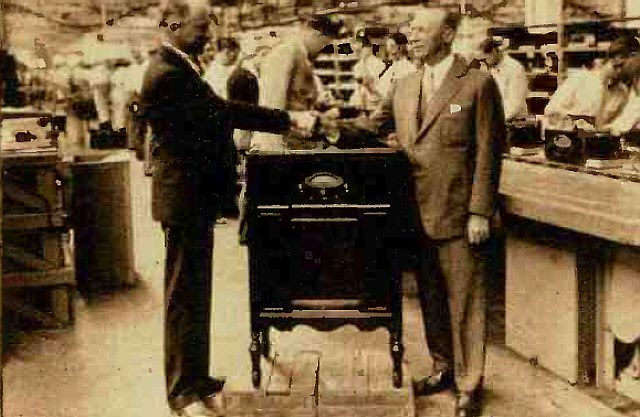

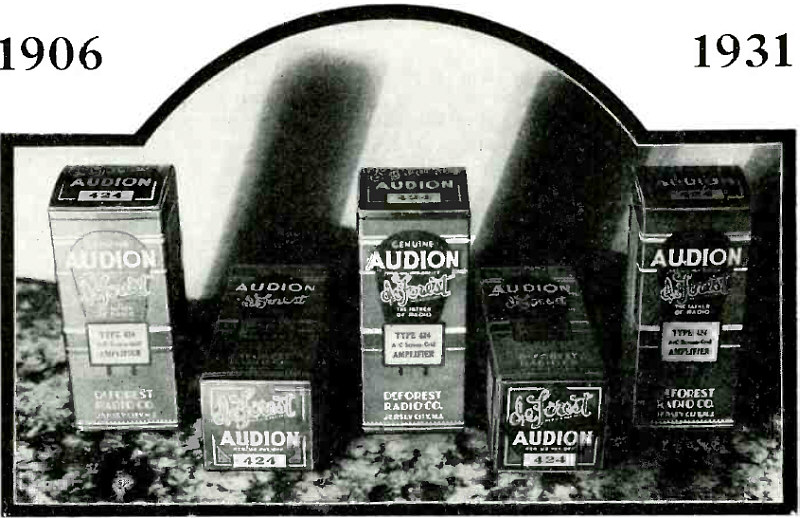

[Previous period] [Next period]




